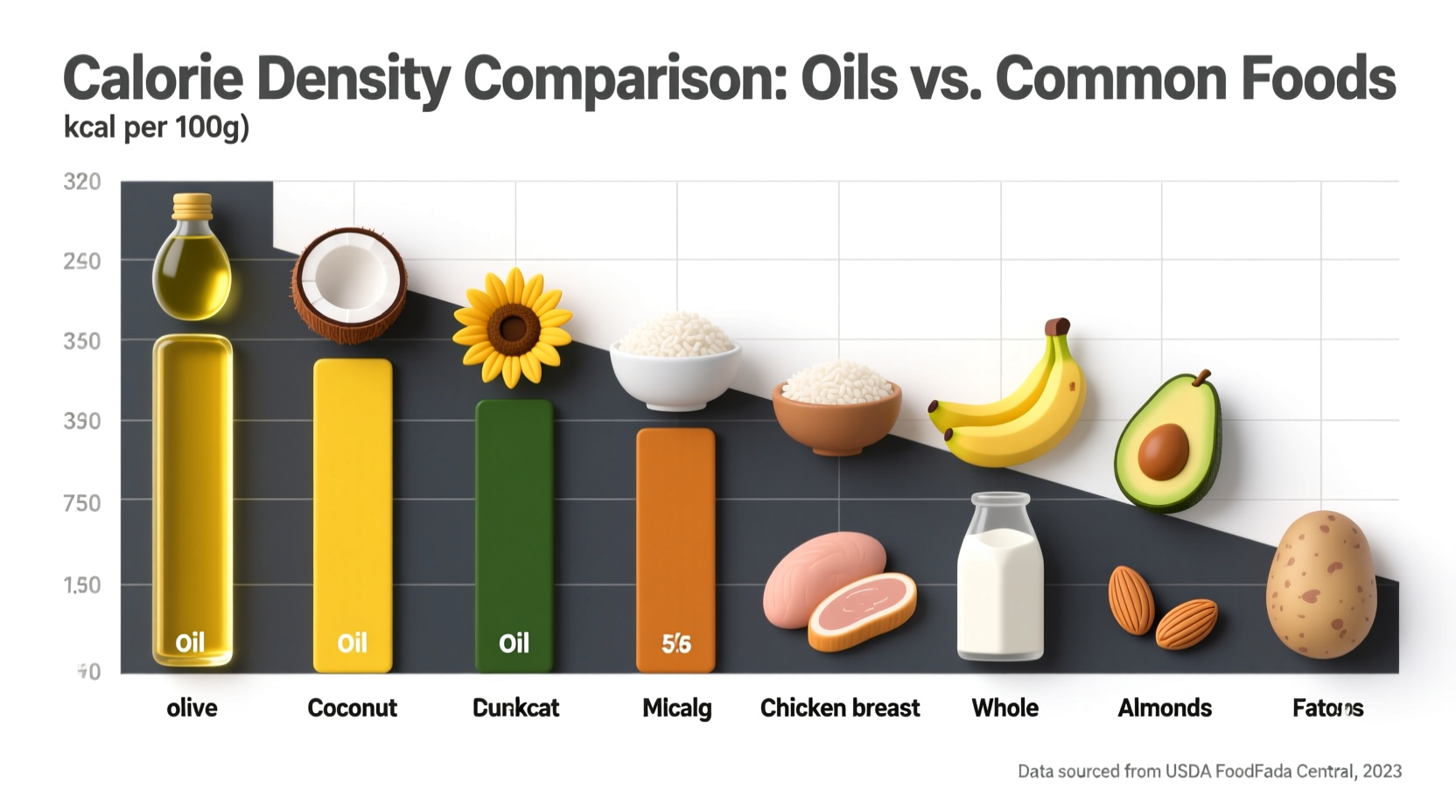When searching for the most calorie-dense food, many people expect exotic treats or processed snacks. The reality might surprise you: pure fats consistently top the calorie charts. As a culinary professional who's studied food composition for over 15 years, I've seen how understanding this fundamental nutritional principle transforms how people approach their diets.
Why Pure Fats Dominate Calorie Density
Calorie density measures energy per unit weight (kcal per 100g). The reason pure fats win this contest lies in basic biochemistry. Fats contain 9 calories per gram, while both carbohydrates and proteins provide only 4 calories per gram. This scientific fact explains why oils, butter, and other fat-rich foods dominate high-calorie rankings.
Water content dramatically affects calorie density. Fresh foods like fruits and vegetables contain significant water, diluting their calorie concentration. When water is removed through drying or processing, calorie density increases substantially.
| Food Item | Calories per 100g | Primary Calorie Source |
|---|---|---|
| Vegetable oil | 884 | Fat |
| Butter | 717 | Fat |
| Dark chocolate (70-85%) | 598 | Fat, Carbs |
| Peanuts | 567 | Fat, Protein |
| Avocado | 160 | Fat |
This comparison, sourced from the USDA FoodData Central database, demonstrates how pure fats significantly outpace other foods in calorie concentration. While nuts and chocolate contain substantial calories, they still fall well below pure fat sources due to their protein, fiber, and water content.
Understanding Calorie Density vs Total Calories
Many confuse calorie density with total calories in a serving. A large apple might contain more total calories than a teaspoon of oil, but the oil remains far more calorie-dense. This distinction matters for dietary planning:
- Weight management: Low-calorie density foods help create satisfying meals with fewer calories
- High-energy needs: Calorie-dense foods benefit athletes, growing children, or those with increased energy requirements
- Nutritional balance: Some high-calorie foods offer valuable nutrients beyond energy

Practical Applications of Calorie Density Knowledge
Understanding which food has the most calories isn't just trivia—it has real-world implications. When working with clients on nutrition plans, I emphasize these practical considerations:
For those seeking weight loss, incorporating more low-calorie density foods (like vegetables and broth-based soups) creates satisfying meals while reducing overall calorie intake. Conversely, individuals needing to gain weight or increase energy intake—such as athletes in training or people recovering from illness—can benefit strategically from calorie-dense options.
The National Institutes of Health recognizes that "calorie density can be a useful concept for weight management" as documented in their dietary guidelines. This scientific backing confirms the practical value of understanding food energy concentration.
Common Misconceptions About High-Calorie Foods
Many assume that high-calorie foods are inherently unhealthy. This oversimplification ignores important context. While pure fats like oils contain the most calories per serving, they also provide essential fatty acids necessary for vitamin absorption and cellular function.
Nutrition science distinguishes between "empty calories" (providing energy without nutrients) and nutrient-dense calories. Avocados, nuts, and seeds deliver substantial calories along with valuable vitamins, minerals, and healthy fats. The Dietary Guidelines for Americans emphasizes that "fats are an important source of calories and energy" while advising choosing primarily unsaturated fat sources.
Putting Calorie Density in Perspective
When evaluating foods, consider both calorie density and nutritional profile. While vegetable oil technically contains the most calories per 100g, it serves different purposes than whole foods like nuts or cheese. A balanced approach recognizes that different situations call for different foods.
For everyday cooking, understanding calorie density helps make smarter substitutions. Using half the oil with added moisture from broth or citrus maintains flavor while reducing calorie concentration. Similarly, adding nuts to salads boosts satisfaction without excessive calories when measured properly.











 浙公网安备
33010002000092号
浙公网安备
33010002000092号 浙B2-20120091-4
浙B2-20120091-4